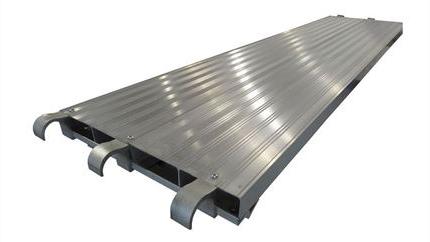
ADTO News
Essential Considerations for Selecting Scaffolding Decking and Planks
On any construction site, scaffolding decking and planks serve as the working surface that supports laborers, tools, and materials. Their quality and suitability directly influence worker safety, operational efficiency, and overall project success. Choosing the right decking is therefore not simply a matter of availability—it requires thoughtful consideration of materials, durability, load capacity, and compliance with safety standards.

Understanding Common Types of Scaffolding Decking
1.Aluminum Planks
Aluminum planks are valued for being lightweight yet strong. They are easy to handle, resistant to corrosion, and suitable for projects where frequent assembly and dismantling are required. Their durability makes them a long-term investment, especially for companies seeking reduced maintenance over time.
2.Steel Planks
Steel planks provide exceptional strength and are ideal for heavy-duty applications. They can support higher loads compared to aluminum or timber alternatives, making them a reliable choice for large-scale construction projects. Modern galvanized steel planks are also resistant to rust, further extending their service life.
3.Timber Planks
Traditional timber planks remain widely used due to their cost-effectiveness and availability. They are often favored for smaller projects or temporary use. However, wood is prone to warping, cracking, or absorbing moisture, which means regular inspection and replacement are essential to maintain safety.
4.Composite Planks
Composite decking is an increasingly popular option, combining the strength of synthetic materials with lighter weight. They are designed for longevity and often come with anti-slip surfaces, offering added protection for workers operating in challenging conditions.
Key Factors to Consider When Selecting Decking
Load Capacity: Ensure the planks meet or exceed the expected load requirements, including both workers and materials.
Durability: Consider the environmental conditions of the site. For example, steel or aluminum may be preferable in humid or corrosive environments.
Ease of Handling: Lighter planks, such as aluminum, can significantly reduce labor intensity during assembly and dismantling.
Safety Features: Look for planks with anti-slip surfaces, fire resistance, or reinforced edges to improve worker protection.
Compliance with Standards: Decking must meet regional or international safety certifications to guarantee reliability and avoid regulatory violations.
Making the Right Choice for Your Project
The ideal scaffolding decking depends on project size, budget, and site conditions. For heavy industrial sites, steel planks may offer unmatched strength. For fast-paced projects requiring frequent relocation, aluminum’s lightweight advantage may prove most beneficial. Meanwhile, timber and composite options can provide flexibility depending on cost and environmental factors.
Conclusion
Scaffolding decking and planks form the foundation of safe and productive work at height. A thoughtful selection process—balancing material type, safety requirements, and project demands—ensures not only worker protection but also improved efficiency and long-term value. For construction professionals seeking reliable scaffolding solutions tailored to diverse project needs, adtomall offers high-quality products and expertise to support safer, more efficient building operations.


 Live Chat
Live Chat
